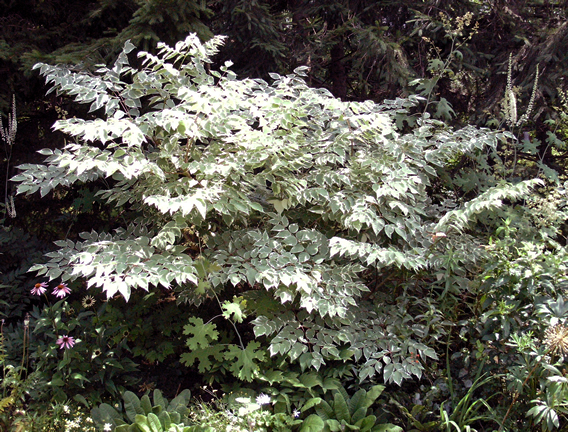| General Description | A contemporary looking small tree or large shrub with large bipinnately compound leaves, large pale cream inflorescences and small black fruit. |
| ID Characteristic | A tree with little lateral branches, the stems emerging from the ground like walking sticks but often the thickness of a broom handle or greater, often covered in short spines. |
| Shape | Flat crowned with few lateral branches. |
| Landscape | As a specimen or accent plant, very contemporary in appearance. Needs some control as the roots sucker and the plant may travel. |
| Propagation | By removal of suckers or stratify seed at 4°C for 90 days. Root cuttings collected in the autumn and cut into 50 mm lengths and insert vertically into pots or flats barley covering the top. Water and place in a cold frame until growth appears and then pot individually. |
| Cultivation | An easy to grow plant in full sun, it requires well drained soil and it is advisable to contain the suckers as they may spread into other nearby plantings. |
| Pests | I have seen some wilt in it causing the removal of some stems which the plant needs periodically regardless. |
| Notable Specimens | The Niagara Parks Botanical Gardens, Niagara Falls, Ontario and The University of Western Ontario, London, Ontario. |
| Bark/Stem Description | Smooth, with many spikes along it, always multi stem. |
| Flower/Leaf Bud Description | Large U shaped bud scars are present along the stem, the buds themselves are not visible. |
| Leaf Description | large 40cm leaves, fine bipinnately compound, medium dark green, almost tropical in look. |
| Flower Description | A large (20cm) upright pale cream panicle. |
| Fruit Description | Produced in late summer and persisting into the late autumn. Large clusters of small purple black fruit. |
| Colour Description | Autumn colour of little significance. |
| Texture Description | Medium textured tree. |
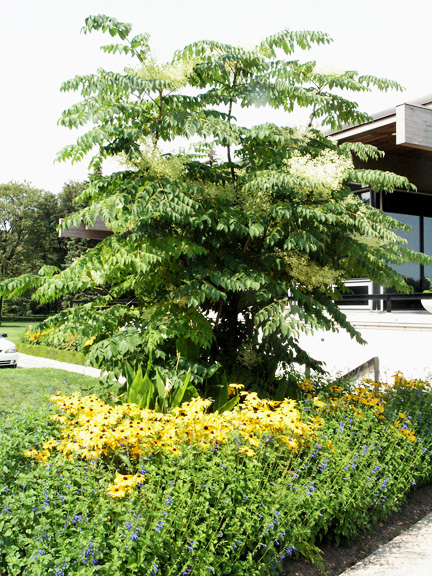
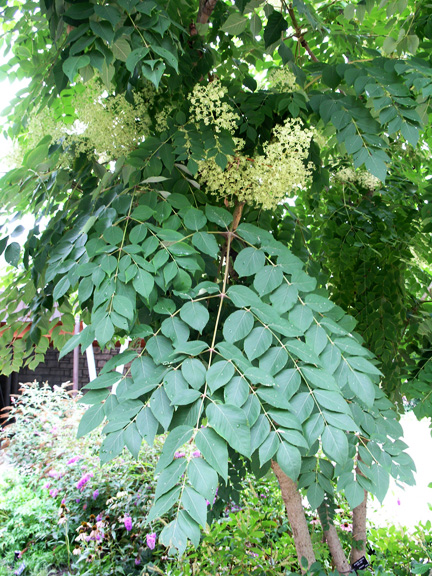
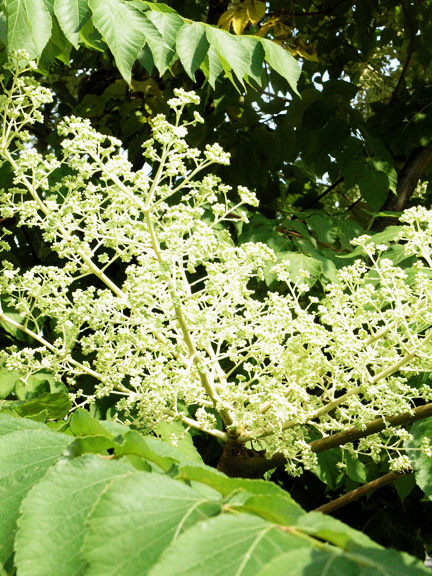
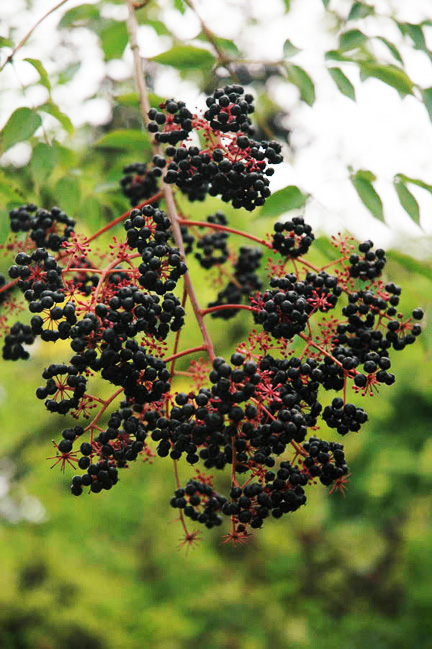
_cult1 copy.jpg)
